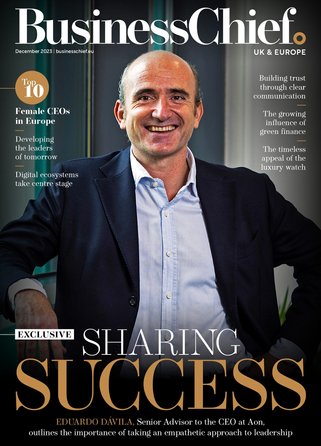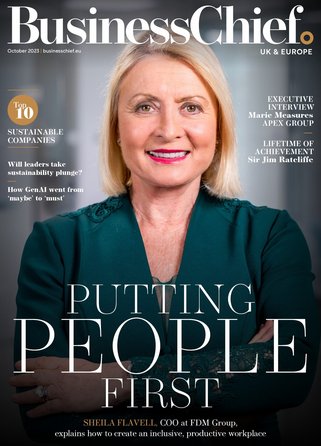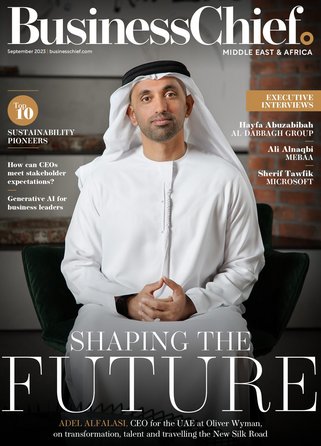Q&A: Computacenter and Munich Re discuss the digital workplace

Technology is rapidly changing the way we live at home and work in the office, from mobiles connecting to central heating systems to virtual desktops assisting contact centre agents in their daily multuichannel interactions.
We spoke to Andreas Toeroek, Head of Group Propositions at Computacenter, about the digital workplace, what this means and how the company helped Munich RE to implement its own version. We also spoke to Dr Dirk Heiss, Global Infrastructure Services Officer at Munich Re, about how this has impacted the group’s operations. First up is Toeroek.
BRE: What does the digital workplace mean to you?
AT: The Digital workplace is the workplace of the future. Technology now has the ability to dramatically transform the workplace environment and be a catalyst for user engagement and collaboration as well as attracting talent. At Computacenter we believe that users are at the heart of our offerings and particularly the digital workplace – ultimately, it is they who use the IT solutions and help drive their company’s productivity and efficiency. Digital Workplace take workplace services to the next level, creating clear benefits for the CIO, the individual employee and of course generating competitive advantage for the business.
How does Computacenter define a successful digital workplace implementation?
New services and technologies only deliver true benefit if they address a specific business and user requirements. Understanding these requirements and making sure the different user types are transparent at the beginning of each digital workplace transformation is key to success. Each organisation is different and it is important to understand each business’ unique priorities and issues before engaging in such wide reaching projects.
Upon implementation users need to understand in detail how the changes affect their daily work lives. According to our customers, the top goals for workplace IT are to achieve increased user engagement and enhance collaboration. As a result, this is how we define a successful digital workplace implementation. If done correctly, this will lead to quantifiable business benefits.
How is the digital revolution impacting your customers?
Many customers are still at an early stage of their digital transformation. Currently they are seeking solutions to an increasingly complex IT environment with shorter development cycles, new stakeholders, continuous transformation and disruptive technologies. What I’m seeing however is that more often than not, customers are looking to carry out small activities on a step-by-step basis towards achieving digitalistion
Introduce the rollout for Munich Re and how it played out.
MunichRe kicked-off their workplace transformation project in 2012 with the aim of significantly increasing levels of user satisfaction and to ensure that their workplace environment was the foundation for future business success. The programme was arranged in two main phases. The first one covered the technological consolidation and rollout of new elements to support the collected user requirements. We supported the rollout of a new mobility platform which included working to grow user adoption. The second phase was started later, in 2015 to implement an appropriate sourcing model that would support an end-to-end managed workplace environment. We piloted the implementation with 100 users in MunichRe’s sales organization.
What are the most common stumbling blocks or specific challenges with a digitalisation project?
Understanding in detail the requirement of the core business and ensuring a joint roadmap moving forward is a key pre-requisite from our perspective. Numerous shadow-IT assessments show, that isolated, silo initiatives without consideration of the required integration to neighbouring solutions are of limited benefit and are likely to become expensive on the long term. For this reason, we recommend that IT organizations and the cores business develop a joint technology and services plan that is flexible and allows agile execution and early prototyping. Thus both parties can jointly learn from small implementations and develop solutions that integrate well with existing platforms.
Case study: Munich Re and workplace digitalisation
BRE: What does the digital workplace mean to you?
DH: Reinsurance underwriting, client management and claims handling require expert knowledge, close collaboration in global, virtual teams and consistent communication with clients and partners across channels like phone, web conferences, e-mail and face to face meetings. The Digital Workplace integrates the tools and services for digital knowledge management, collaboration and communication – and enables our employees to be productive and ultimately improves our bottom-line company result.
How is the digital revolution impacting your employees?
Digitalization will transform the insurance industry as a whole. It not only affects the sales channel with a shift from traditional insurance agent business to online business. Approaches like big data analytics and partnerships with players outside the insurance industry allow new value chains and new risk management solutions like micro-transactions (“insure-as-you-go”) and insurance products embedded into other services. For our employees, this means change in the way we do business and that technology expertise is becoming increasingly relevant.
Were there any stumbling blocks or specific challenges with the project? If so how did you overcome them?
As any large organization, we were struggling with the organizational change required to adopt new working style, collaborating using IT tools and work more flexible in general. One key success factor for us was that we approached the digital workplace project in collaboration with our HR department. HR and IT together with business stakeholders defined new working style, mobility options and IT requirements based on a set of personas who represent typical employees of Munich Re. This helped us in communicating the benefits and educating people about good approaches to use the digital tools in their daily business life.
Read the October 2016 issue of Business Review Europe magazine.
Follow @BizReviewEurope
Featured Articles
SAP has announced it has appointed a new President for a newly-created EMEA region, aiming to make the most of the opportunities of cloud and AI technology
Technology giant SAP has expanded its portfolio with the acquisition of LeanIX, a leader in enterprise architecture management (EAM) software
To help businesses achieve increased productivity, Siemens and Microsoft are deepening their partnership by showcasing the benefits of generative AI



